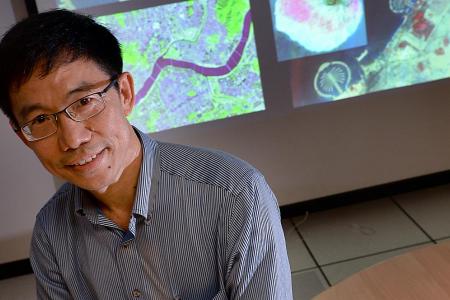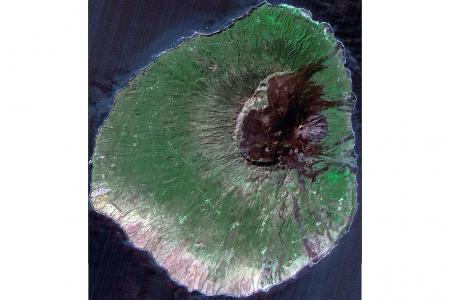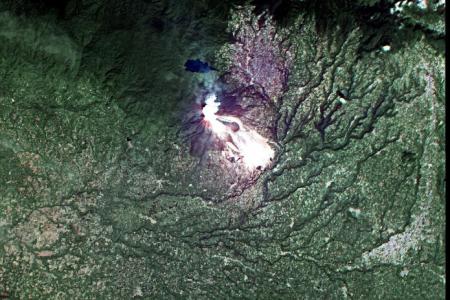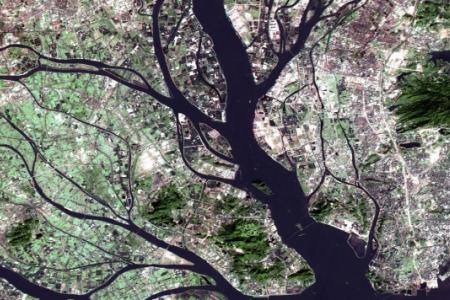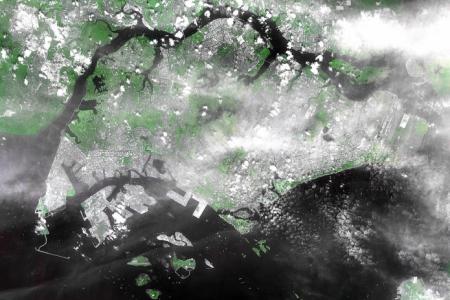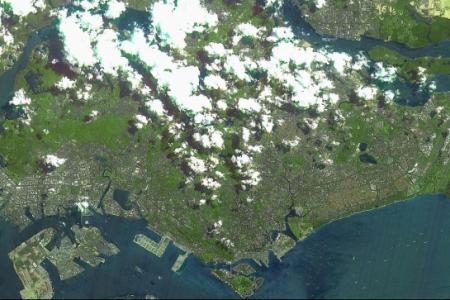Our S'pace
Singapore's micro-satellite has taken more than 8,000 pictures from space
It took him six years to deliver his third child.
It wasn't a baby, but a satellite.
And when he finally did it, he said it was just as nerve-wrecking as seeing his own children being born.
Three years on, X-SAT -Singapore's first micro-satellite - has made 15,000 cycles around the Earth, which means it travels around the Earth four times each day.
It has been battered by a radiation storm, travelled nearly 700 million km, taken 8,000 photographs and completed 4,400 telecommands - instructions from the base that directs the satellite to turn or take a photograph.
A radiation storm occurs when there is major eruptions on the sun, causing the Earth's atmosphere to distort. During the storm, commands cannot be sent to the satellites.
X-SAT was created by Professor Low Kay Soon, director of the Satellite and Research Centre in Nanyang Technological University (NTU), and his team of 20 staff members and 20 NTU graduates.
The professor is married with two children - a daughter, 18, and son, 16.
He said: "The X-SAT is my third child."
In 2003, Singapore's Defence Science Organisation, offered a partnership to the research centre to explore ideas and space programmes.
CREATION
There were four phases in creating X-SAT. First, there was the engineering phase where the team created the basic industrial prototype.
Then, the functionality phase where the prototype was tested to ensure it would not disintegrate during launch.
Next was the space grade component phase where parts in the prototype were replaced with ones that could withstand temperature differences and vibrations in space.
And finally the duplication phase, where the team created a copy of the prototype that they used to solve problems the X-SAT might experience in space.
Prof Low's "baby" was finally ready for delivery in 2009.
THE LAUNCH
He said the satellite launch process is very complicated and risky as they had to ensure it would not break apart during launch.
He said: "There was only one chance."
The launch date was set for April 20, 2011, and the team went to the Satish Dhawan Space Centre in Andra Pradesh, India, to witness it.
Prof Low admitted that every minute he spent waiting for the X-SAT to be launched was nerve-racking.
He said: "Not all satellite launches are successful, so I was slightly worried. But after it launched, I was relieved that the years of hard work finally paid off."
Prof Low's favourite photo is first one of Singapore taken by the X-SAT on May 11, 2011.
The garden city looked very much like a little red dot, with the infrared turning all of the greenery to red.
He added that the Satellite Research Centre will be launching three more satellites in the next two years.
He said: "Singapore doesn't have a space industry, so we had to start somewhere. And now, NTU is the pioneer of micro-satellites."
Singapore doesn't have a space industry, so we had to start somewhere. And now, NTU is the pioneer of micro-satellites.
- Professor Low Kay Soon, creator of the micro-satellite X-SAT
Get The New Paper on your phone with the free TNP app. Download from the Apple App Store or Google Play Store now

